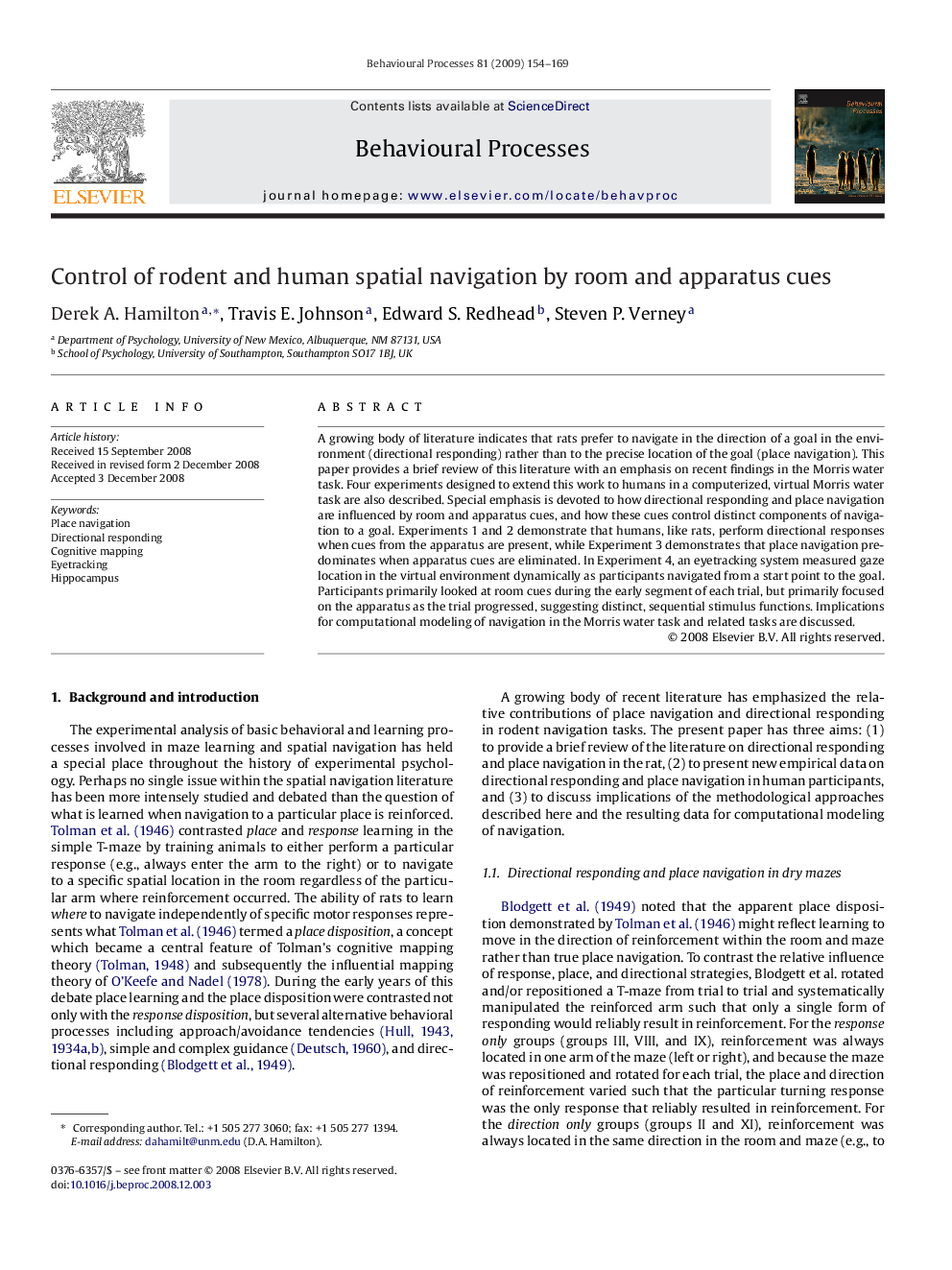| Article ID | Journal | Published Year | Pages | File Type |
|---|---|---|---|---|
| 2427343 | Behavioural Processes | 2009 | 16 Pages |
A growing body of literature indicates that rats prefer to navigate in the direction of a goal in the environment (directional responding) rather than to the precise location of the goal (place navigation). This paper provides a brief review of this literature with an emphasis on recent findings in the Morris water task. Four experiments designed to extend this work to humans in a computerized, virtual Morris water task are also described. Special emphasis is devoted to how directional responding and place navigation are influenced by room and apparatus cues, and how these cues control distinct components of navigation to a goal. Experiments 1 and 2 demonstrate that humans, like rats, perform directional responses when cues from the apparatus are present, while Experiment 3 demonstrates that place navigation predominates when apparatus cues are eliminated. In Experiment 4, an eyetracking system measured gaze location in the virtual environment dynamically as participants navigated from a start point to the goal. Participants primarily looked at room cues during the early segment of each trial, but primarily focused on the apparatus as the trial progressed, suggesting distinct, sequential stimulus functions. Implications for computational modeling of navigation in the Morris water task and related tasks are discussed.
